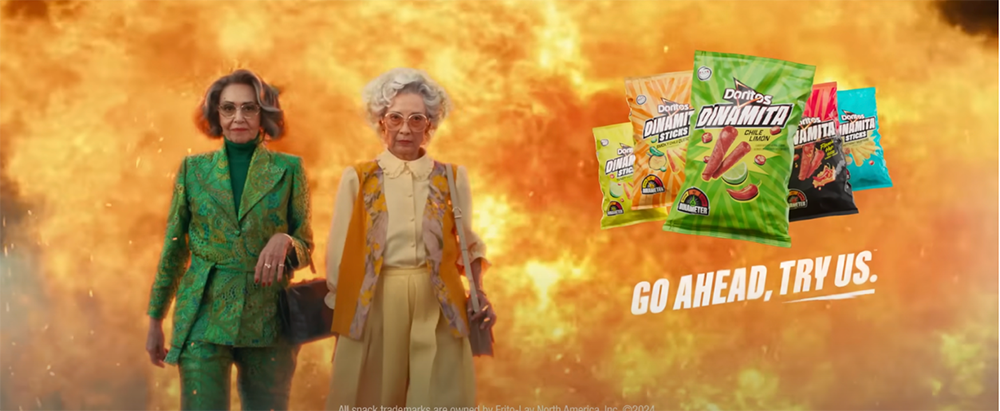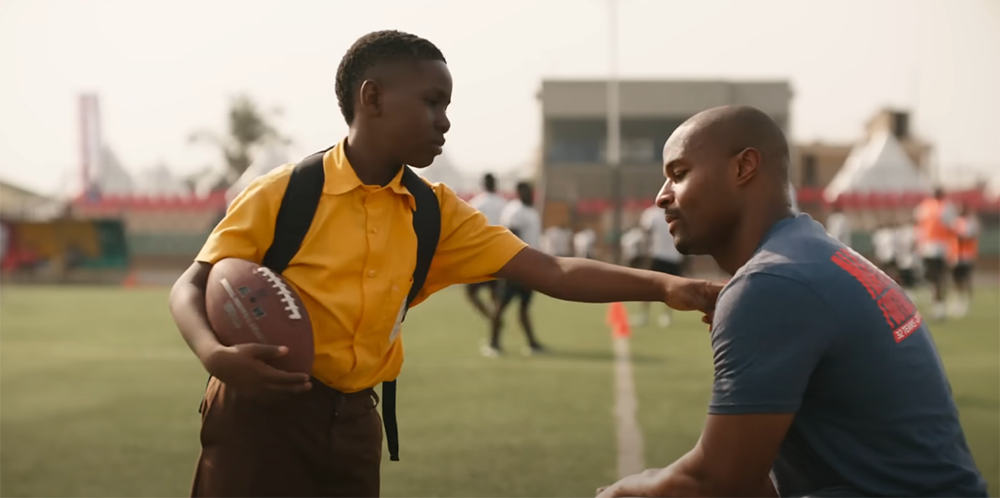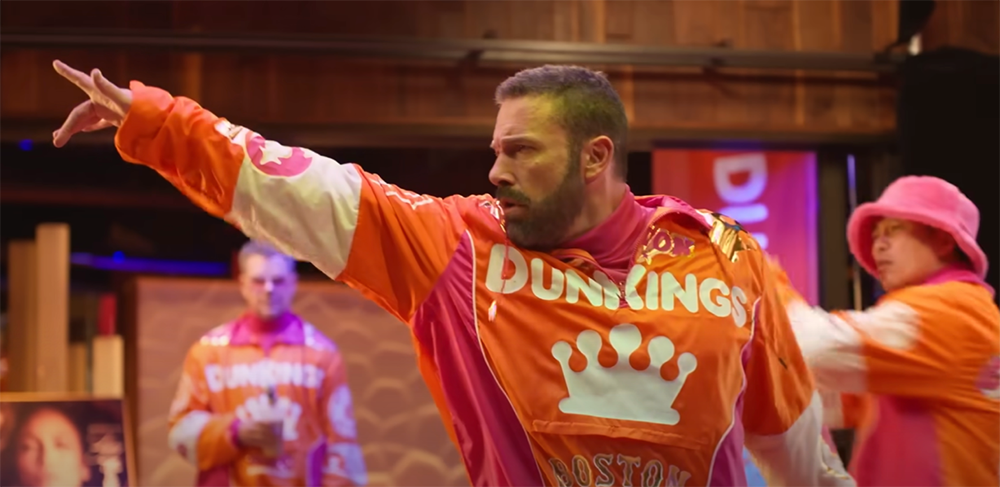Delivering by far the year’s biggest audience – for both the game and its ads – the Super Bowl is an increasingly unique event. WARC’s Cathy Taylor looks at the game’s ads through several lenses, including their diversity and their ongoing (over)use of celebrities.
No other TV program, or batch of advertising, comes anywhere close to matching the Super Bowl’s scope and scale. With 123.7 million watching the game this year – and more than 200 million watching some part of the Super Bowl across platforms – 2024 was no exception.
With that in mind, this year's WARC coverage focused not just on the winners and losers among brands that advertised during the game – paying $7 million for the 30-second privilege – but also on how well the ads reflect American diversity.
The Super Bowl audience is all of us
The audience for the Super Bowl, and National Football League games in general, has long since moved beyond football jersey-clad men drinking beer. While approximately 70% of American men engage with the league, so do most (53%) American women, according to SponsorPulse.
Additionally, as Jennifer Yepez-Blundell of DRAFTED underscores in this article, interest in the NFL cuts across genders, and ethnicities; Latino NFL fandom is expected to reach 53 million by 2050. And Latinas, she notes, play a special role, not only following sports somewhat differently – with a greater emphasis on social media engagement – but also driving the purchasing decisions in most Latino households, including in sports apparel.
So, how did the Super Bowl ads stack up in terms of reaching the increasingly powerful Latino cohort? The ad “Dina and Mita” for Doritos involved a plot starring Jenna Ortega’s on-screen abuelas in hot pursuit of a bag of Doritos Dinamita flavor; it scored a 3.5 Stars out of a possible 5.9 Stars according to System1 research, a strong showing among returning advertisers. (System1 measures viewer emotion to produce its effectiveness rankings.)

As is becoming more common, the ad – though heavily focused on Latino culture – was also created for crossover appeal, mixing Spanish, English, celebrities, and a plot that could be understood universally. It ranked No. 10 in USA Today’s Ad Meter, a straight-up popularity contest of the game’s ads.
System1’s research showed that diversity and inclusion are not automatic effectiveness drivers, but done well, as in the case of the Doritos ad, they “make under-represented groups feel seen while captivating a wider audience,” according to the company’s chief customer officer, Jon Evans.
It could be argued that the No. 1 ad according to System1’s rankings did the same. For Michelob ULTRA, its central celebrity was Argentinian soccer superstar Lionel Messi, with former Miami Dolphins quarterback Dan Marino, and actor Jason Sudeikis, in cameo roles.
For the first time, the game was also broadcast in Spanish, on Univision, leading some brands to take a more focused approach to reaching Spanish-speaking audiences. As O’Keefe, Reinhard & Paul’s Chief Strategy Officer Nate Swift, explained during WARC’s Super Bowl podcast, the agency’s ad for Metro by T-Mobile leveraged the energy around the Univision broadcast. “It was a great opportunity that we saw to really celebrate the NFL, celebrate the Super Bowl and celebrate the brand in a way that's very culturally American, but through a very specifically Hispanic lens,” he said.
The NFL’s role in the ad game
Another advertiser that came to play was the NFL, which used the game as a platform to promote several initiatives. The most successful effort overall, according to both System1 and USA Today, was a two-minute commercial shot in Accra, Ghana, for the NFL’s International Pathway Program. Following the NFL aspirations of a young boy named Kwesi, it intermixed Ghanian culture with football. “This was just a really beautiful way to show that, ‘Hey, guess what? – their neighborhood areas look just like the places you live, right?’, said VML’s Walt Geer on the podcast. Geer, who is the agency’s Chief Creative Officer, Innovation, North America, continued: “And these kids over here are just like the kids around you that strive to just want to do more and be more and want to have fun and want to play and delve into this sport.” It ranked No. 6 in System1’s rankings and No. 5 in USA Today’s Ad Meter.

So, has there been progress in Super Bowl ad diversity? Yes … but. Alltold.ai analyzed 50 years of Super Bowl ads for diversity, and found that while there is more inclusion, there is not parity. Alltold CEO Morgan Gregory wrote in this article, “What we see over the past 50 years is that the on-screen inclusion of people with a feminine gender expression has gradually increased,” but, at a per decade increase of 5% since the 1980s, “it will take another thirty years to reach on-screen gender parity.”
Further, greater inclusion of different skin tones has grown in fits and starts. Alltold’s data found a sudden jump in screen time for darker tones (from 21% to 35%) in 2021, following the murder of George Floyd. But there’s been a drop of 3.5% per year since.
Is the idea of getting older getting better?
Alltold’s 50-year analysis, which looked at Super Bowl ads through last year, shows general under-representation of people age 30+. In 2024, plenty of older people were featured, particularly among celebrities. The roster included Arnold Schwarzenegger (76), “Judge” Judy Sheindlin (81) and Christopher Walken (80).
Also this year, the Japanese pharma company Astellas openly targeted older women, dropping an ad for its menopause drug Veozah.
So, was this pharma’s big Super Bowl moment?
Pharma is the second biggest spender in US advertising, but it has been notably absent from past Super Bowls. As EVERSANA INTOUCH’s John Kenny wrote before the game, this doesn’t add up: “Pharma’s biggest brands are all spending in excess of $100 million per year on campaigns to reach their audiences. Their budgets are similar to, or exceed, a lot of existing Super Bowl advertisers, and the Super Bowl’s biggest selling point is that it’s one of the last events that everyone watches.”
That changed this year, with Pfizer launching a 60-second paean to science set to Queen’s “Don’t Stop Me Now.” The commercial displayed what Kenny thinks is the best way for the category to show up at the game, moving away from product attributes and towards how pharma is transforming treatments.
Viewers agreed; it came in No. 8 in System1’s rankings.
Celebrities: Super Bowl advertising’s biggest demo?
As with Super Bowls past, the ads favored using celebrities over brand characters, despite evidence it should be the reverse.
USA Today’s Ad Meter shows that celebrities win ad popularity contests. Its top spot, a State Farm commercial, featured Schwarzenegger and Danny DeVito (and only a cameo appearance from the brand’s familiar spokescharacter, Jake). The No. 2 spot for Dunkin’ showcased the brand’s orange and pink colors, but also Ben Affleck, Matt Damon, Tom Brady and JLo.

But per usual, the Ad Meter results bore almost no relationship to System1’s rankings, which work to figure out what commercials will prove effective, especially over the long-term. Only an ad featuring the iconic Clydesdales for Budweiser, and the aforementioned NFL ad, overlapped in the top 10.
Both rankings are awash in celebrities, but only one attempts to determine the bottom line. In that case, it's Michelob ULTRA (along with Messi, Marino and Sudeikis), for the win.

